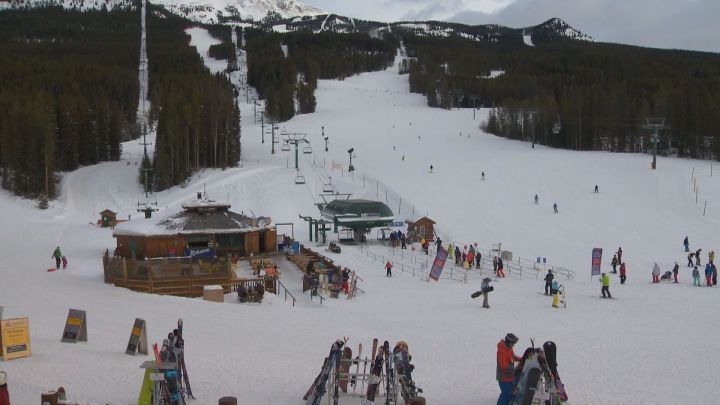Parks Canada is rushing through new guidelines that would allow too much development at a ski hill in Banff National Park, an environmental group said Tuesday.

“The increased impact of commercial development in the parks is a huge concern,” said Sean Nichols, conservation specialist with the Alberta Wilderness Association.
At the beginning of June, Parks Canada released guidelines for development and use of Lake Louise, one of Canada’s largest ski resorts and a regular World Cup race venue. The document, crafted in consultation with ski hill management, is intended to guide development for the next 42 years.
“We want to know that if the market continues to grow, we (will) be prepared to meet that need,” said Dan Markham, Lake Louise marketing manager.
READ MORE: New Lake Louise ski hill plan could mean lift, lodge and more parking
The guidelines involve removing about 1,000 hectares from the resort’s leasehold in exchange for permission to put runs on a currently unused 500 hectares.
They would also allow the hill to build several warming huts and a large facility on the top of Mount Whitehorn. The new mountaintop facility would become the focus of the resort’s summer activities, leaving the mid-mountain off limits to humans and for the use of animals such as grizzly bears.
Overall, the resort’s footprint would shrink by about 670 hectares.
While Nichols acknowledges some of the new guidelines would have merit, he points out that the land the resort would give up is useless to it anyway.
“It amounts to a land swap – land they couldn’t use for land they can and are planning to use.”
Although specific proposals would face an environmental assessment and public comment, Nichols said environmentalists fear that if they wait until a specific plan comes forward, it’ll be too late.
“(When) we get to some of those later stages, (proponents) say, ‘Well, we’re just conforming to the guidelines, which already happened years ago and there was a chance for public feedback back then.”’
Parks Canada spokeswoman Melanie Kwong acknowledges the suggested guidelines would commit the agency to allow the development – in some form and at some point – as long as it met environmental standards.
The changes are needed to adjust rules that were originally developed in the early 1980s, well before Alberta’s population boom, Kwong said. Other ski resorts in the mountain parks have already been through the process, she added.
She called the guidelines a “forever plan” and cautioned that any of the projects discussed are years in the future.
The association didn’t see any of the documents until the beginning of June, Nichols said. The group has until Sunday night to submit comments.
He suggested the guidelines are part of a pattern of increasing commercial control of national parks. He pointed to previous approved projects at the Columbia Icefields, Mount Norquay and Maligne Lake, all in Jasper and Banff national parks.
“It is indicative of a pattern. That really has to do with the increased commercialization of the national parks.”

Comments